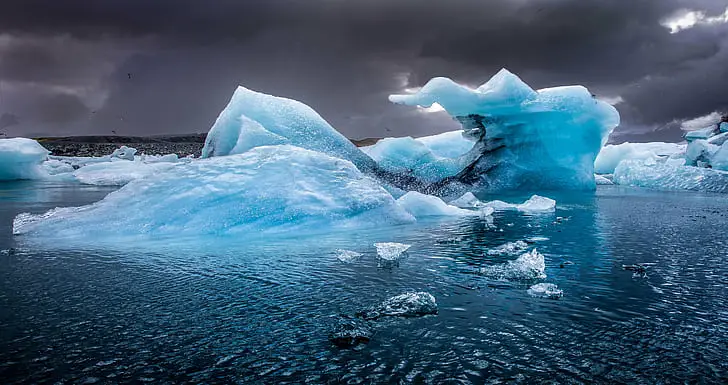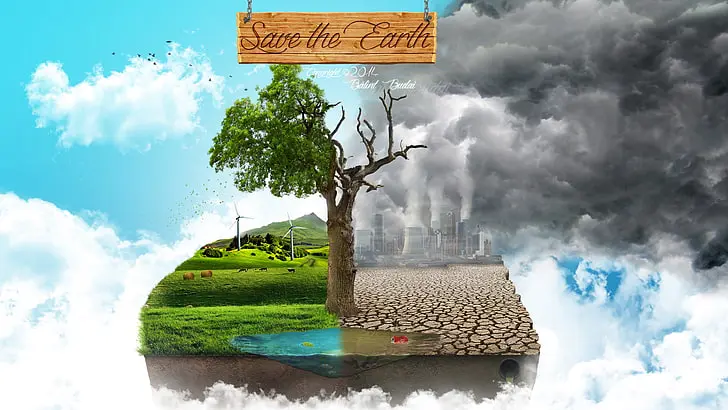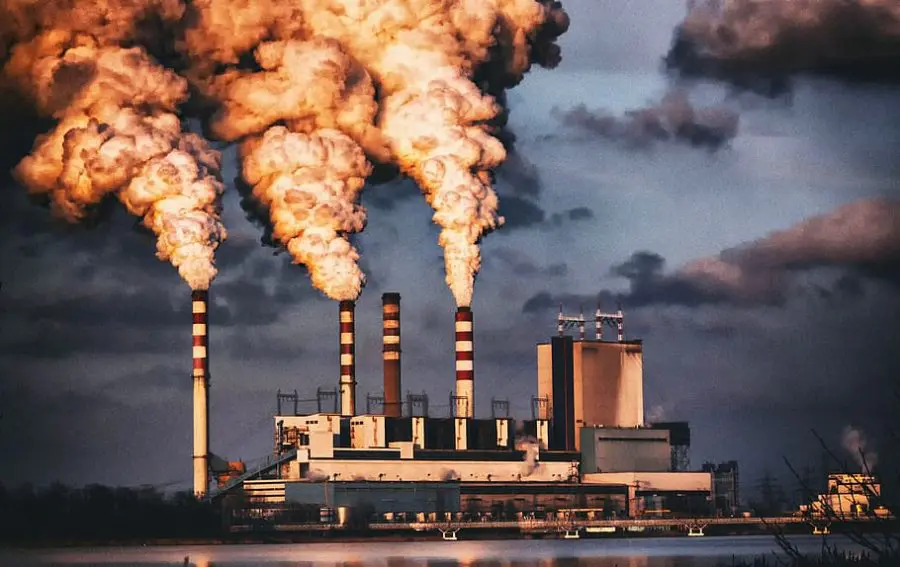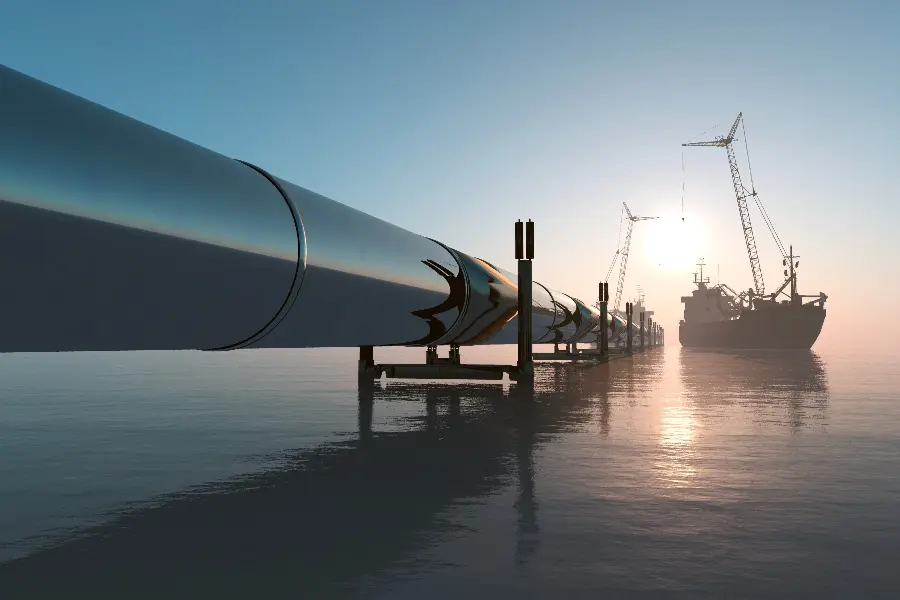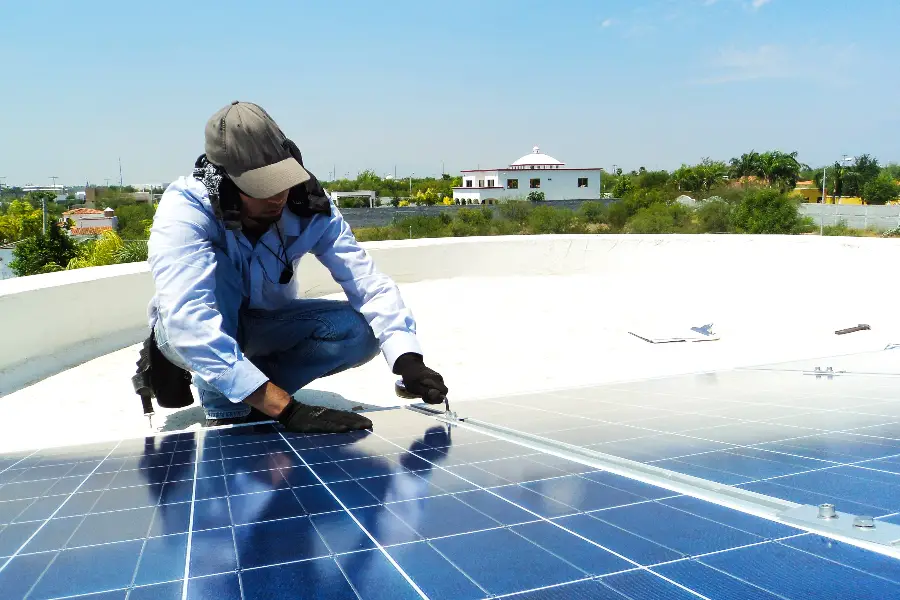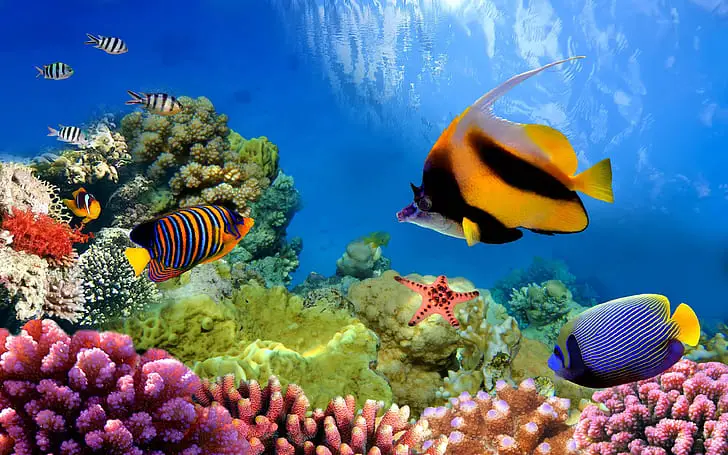
Discover how does climate change affect coral reefs in our latest blog post. Uncover the science, impacts, and what we can do to help. Dive in today!
Ever wondered about how climate change affects coral reefs? Well, you’re not alone.
These vibrant underwater cities, teeming with life and color, are facing significant challenges due to our changing climate.
From the chemistry of ocean acidification to rising sea temperatures, climate change is reshaping the world beneath the waves. Let’s dive in and explore this crucial issue together.
How Does Climate Change Affect Coral Reefs?
Are you curious about the phrase how does climate change affect coral reefs and what it truly entails?
It’s a topic that touches on various aspects from the intricate chemistry of our oceans to the diverse life forms that call these reefs home.
In this post, we’ll journey beneath the waves to understand the impacts of climate change on these underwater marvels.
We’ll explore scientific insights, real-world case studies, and the broader implications for both marine life and human societies. So, let’s embark on this enlightening voyage together!
A brief overview of coral reefs and their importance
Coral reefs, often referred to as the ‘rainforests of the sea,’ are some of the most diverse and valuable ecosystems on Earth.
They are home to countless species of fish, mollusks, crustaceans, and more, and many are not found anywhere else in the world.
But these reefs are more than just a hub of biodiversity. They also provide essential services to humans.
They act as natural barriers, protecting our coastlines from storms and erosion.
They offer a source of income for local communities through tourism and fisheries.
And let’s not forget their role in medicine; many drugs are derived from reef organisms.
So, when we talk about coral reefs, we’re talking about an ecosystem that’s not just beautiful, but also incredibly vital for both marine life and us humans.
Climate change and its potential impacts on marine life
Now, let’s turn our attention to climate change, a global issue that’s making waves in our oceans, particularly in our coral reefs.
Climate change, driven by human activities like burning fossil fuels, is causing our planet’s temperatures to rise.
This warming isn’t just happening in the air around us, but also in our oceans.
And for marine life, this increase in temperature can have serious consequences.
For instance, higher ocean temperatures can lead to coral bleaching, a stress response where corals expel the colorful algae living in their tissues, causing them to turn white.
Without these algae, corals struggle to grow and reproduce, making them more susceptible to disease and death.
But temperature rise isn’t the only concern. Climate change also leads to ocean acidification, where the ocean absorbs excess carbon dioxide from the atmosphere, making the water more acidic.
This change in acidity can make it difficult for organisms like corals and shellfish to build their calcium carbonate shells and skeletons.
In short, climate change poses a significant threat to marine life, altering their habitats and challenging their survival.
And as we’ll see in the following sections, the impacts on coral reefs are particularly concerning.
Healthy Coral

Bleached Coral

The Chemistry of Ocean Acidification
Let’s dive a little deeper now and explore the chemistry of ocean acidification.
It might sound like a complex term but don’t worry, we’ll break it down together.
You see, our oceans do a lot more than just house incredible marine life.
They also play a crucial role in regulating our planet’s climate, acting like a giant sponge, soaking up carbon dioxide from the atmosphere.
But what happens when there’s too much CO2 to absorb? Let’s find out.
How carbon dioxide absorption by seawater leads to ocean acidification
So, how does the absorption of carbon dioxide by seawater lead to ocean acidification?
Well, when CO2 is absorbed by seawater, a series of chemical reactions occur.
The CO2 reacts with the water to form carbonic acid, which then breaks down into bicarbonate ions and hydrogen ions.
The increase in hydrogen ions is what leads to the decrease in pH, making the ocean more acidic.
This process is what we refer to as ocean acidification. It’s a bit like adding a squeeze of lemon to a glass of water, making it more acidic.
But unlike your glass of water, this change in ocean chemistry has far-reaching effects on marine life, particularly on organisms that build shells and skeletons.
The impact of increased acidity on the saturation of calcium carbonate minerals
Now, let’s talk about the impact of this increased acidity on the saturation of calcium carbonate minerals.
Many marine organisms, including corals, shellfish, and some types of plankton, rely on these minerals to build their shells and skeletons.
When the ocean becomes more acidic, it reduces the concentration of carbonate ions available in the water, which are a critical component of calcium carbonate.
This means there are fewer building blocks for these organisms to build their shells and skeletons.
It’s like trying to build a house with a shortage of bricks. The result?
These organisms struggle to grow and maintain their structures, which can impact their survival and the overall health of the marine ecosystems they inhabit.
The Effects of Climate Change on Coral Reefs

Having understood the chemistry behind ocean acidification, let’s now turn our attention to the broader picture, the effects of climate change on coral reefs.
These vibrant ecosystems are like the canaries in the coal mine for our oceans, often being the first to show signs of distress due to environmental changes.
From bleaching events to changes in species composition, climate change is leaving its mark on these underwater paradises.
So, let’s delve into the details and unravel the impacts of our changing climate on these vital ecosystems.
The impact of rising sea temperatures on coral bleaching
Let’s start with one of the most visible impacts of climate change on coral reefs, coral bleaching.
Corals live in a symbiotic relationship with tiny algae called zooxanthellae, which live in their tissues and give corals their vibrant colors.
These algae are like the corals’ personal chefs, using sunlight to produce food that the corals use to grow and reproduce.
But when sea temperatures rise due to climate change, this relationship can break down.
The corals, stressed by the heat, expel the algae, causing them to turn white or ‘bleached.’
Without their algae, the corals struggle to get the nutrients they need and become more susceptible to disease and death.
It’s like losing their source of food and becoming weak and vulnerable as a result.
The effect of ocean acidification on coral calcification
Next, let’s talk about ocean acidification and its effect on coral calcification.
As we’ve learned, ocean acidification reduces the availability of carbonate ions in seawater, which are crucial for the formation of calcium carbonate.
Corals use calcium carbonate to build their hard skeletons, a process known as calcification.
But when the ocean becomes more acidic, calcification becomes more difficult.
It’s like trying to build a wall with fewer and fewer bricks available.
This can lead to slower coral growth rates and weaker coral structures, making them more vulnerable to physical damage.
The consequences of more intense storms and sea-level rise on coral reefs
Lastly, climate change is also leading to more intense storms and sea-level rise, both of which can have significant impacts on coral reefs.
More intense storms can cause physical damage to the reefs, breaking apart the coral structures and leading to loss of habitat for many marine species.
On the other hand, sea-level rise can lead to increased water depth, which can reduce the amount of light reaching the corals.
This can impact the corals’ ability to photosynthesize and grow. It’s like trying to read a book in a dimly lit room. It becomes more challenging and less efficient.
In summary, climate change, through rising sea temperatures, ocean acidification, and changes in storm patterns and sea levels, poses a significant threat to the health and survival of coral reefs.
Case Studies
Now that we’ve explored the science behind how climate change affects coral reefs, let’s bring these concepts to life with some real-world examples.
Case studies can offer us a tangible look at these impacts, painting a picture of what’s happening right now in our oceans.
From the iconic Great Barrier Reef to the vibrant Caribbean Reefs, we’ll see how these changes are playing out and what it means for these crucial ecosystems.
So, let’s dive into these real-life stories and see what they can teach us.
The Great Barrier Reef: A case study of coral bleaching
First, let’s journey to the Great Barrier Reef, the world’s largest coral reef system located off the coast of Australia.
This reef is a hotspot for biodiversity, home to thousands of species, and a major attraction for tourists from around the world.
But in recent years, the Great Barrier Reef has been hit hard by coral bleaching events.
In 2016 and 2017, the reef experienced back-to-back bleaching events due to unusually warm sea temperatures.
These events led to widespread coral death, particularly in the northern part of the reef.
The bleaching was so severe that many scientists fear the reef may never fully recover.
This case study illustrates the devastating impact that rising sea temperatures can have on coral reefs and the urgent need for action to mitigate climate change.
The Caribbean Reefs: A case study of storm damage and Disease
Now, let’s travel to the Caribbean, a region known for its beautiful coral reefs.
These reefs are not only important for the marine life they support but also for the local economies that rely on tourism and fishing.
However, the Caribbean reefs have been facing their own set of challenges due to climate change.
In recent years, more intense storms have caused significant physical damage to these reefs.
For example, Hurricane Irma in 2017 caused widespread destruction of coral reefs across the region.
In addition to storm damage, the reefs have also been plagued by a mysterious disease known as Stony Coral Tissue Loss Disease, which some scientists believe may be linked to stressors associated with climate change.
These case studies from the Great Barrier Reef and the Caribbean Reefs highlight the real and present dangers that climate change poses to coral reefs.
They underscore the urgency of addressing climate change to protect these vital ecosystems.
References
For the Great Barrier Reef and coral bleaching:
Hughes, T. P., et al. (2017). Global warming and recurrent mass bleaching of corals. Nature 543(7645): 373-377
For the Caribbean Reefs, storm damage, and disease:
Precht, W. F., et al. (2016). Unprecedented Disease-Related Coral Mortality in Southeastern Florida. Scientific Reports 6: 31374
The Biological Impacts of Ocean Acidification
Having explored the effects of climate change on coral reefs and delved into some real-world case studies, let’s now turn our attention to the biological impacts of ocean acidification.
This might sound a bit daunting, but stick with me. We’ll be looking at how changes in ocean chemistry can ripple through marine life, affecting everything from tiny shell-building creatures to the larger food chains they support.
Intrigued? Let’s dive in and discover the hidden impacts beneath the surface.
The potential benefits for photosynthetic algae and seagrasses
Let’s start with a surprising twist in our story, the potential benefits of ocean acidification for certain organisms.
You see, not all marine life responds negatively to increased CO2 in the water.
Photosynthetic organisms like algae and seagrasses can actually benefit.
These plants use CO2 for photosynthesis, just like plants on land. So, more CO2 in the water can mean more food for them, potentially leading to faster growth rates.
It’s a bit like adding fertilizer to a garden. However, it’s important to note that this doesn’t mean ocean acidification is a good thing.
The overall impacts, as we’ll see, are largely negative and pose a significant threat to marine ecosystems.
The negative effects on calcifying species like oysters, clams, sea urchins, and corals
Now, let’s talk about the other side of the coin, the negative effects of ocean acidification on calcifying species.
These are creatures like oysters, clams, sea urchins, and of course, corals, that build shells or skeletons out of calcium carbonate.
As we’ve learned, ocean acidification reduces the availability of carbonate ions, making it harder for these organisms to build and maintain their shells and skeletons.
Imagine trying to build a house, but the bricks keep dissolving. This can lead to weaker structures and make these organisms more vulnerable to predation and disease.
The potential impact on marine food chains and biodiversity
Finally, let’s consider the broader impacts of ocean acidification on marine food chains and biodiversity.
The ocean is a complex web of life, with each species playing a unique role.
When key species like corals or shellfish are affected, it can have ripple effects throughout the food chain.
For example, if shellfish populations decline, it can impact the larger fish that rely on them for food.
Similarly, if coral reefs degrade, it can lead to a loss of habitat for the many species that call these reefs home.
This can lead to declines in biodiversity and disrupt the balance of marine ecosystems.
It’s like removing bricks from a Jenga tower – even one piece can destabilize the whole structure.
The Socioeconomic Impacts of Coral Reef Degradation
Having explored the biological impacts of ocean acidification, let’s now shift our focus to another crucial aspect, the socioeconomic impacts of coral reef degradation.
Coral reefs are not just ecological powerhouses; they’re also economic engines for many communities around the world.
From tourism to fisheries, these vibrant ecosystems provide livelihoods for millions of people.
But as climate change continues to alter these underwater landscapes, what does it mean for these economies?
Let’s dive in and explore the human side of this global issue.
The importance of coral reefs for tourism and fisheries
First, let’s talk about the importance of coral reefs for tourism and fisheries.
Coral reefs are a major draw for tourists, attracting millions of visitors each year who come to snorkel, dive, or simply enjoy the stunning underwater scenery.
This tourism generates billions of dollars in revenue and supports countless jobs in local communities.
It’s like having a natural theme park right in your backyard.
Similarly, coral reefs are vital for fisheries.
They provide nursery grounds for many species of fish and shellfish, supporting both commercial and subsistence fishing activities.
In fact, it’s estimated that hundreds of millions of people worldwide rely on fish from coral reefs as their primary source of protein.
So, when we talk about coral reefs, we’re not just talking about beautiful underwater landscapes, but also about a vital source of income and food for many communities.
The potential economic losses from coral reef degradation
Now, let’s consider the potential economic losses from coral reef degradation.
As climate change leads to coral bleaching, ocean acidification, and more intense storms, the health of coral reefs is declining.
This can lead to a loss of tourism revenue as the beautiful coral landscapes that attract visitors degrade.
It’s like seeing your favorite theme park falling into disrepair.
Similarly, the degradation of coral reefs can lead to declines in fish populations, impacting fisheries.
This can lead to reduced catches and income for fishermen and potentially higher prices for consumers.
In the worst-case scenario, it could even lead to the collapse of local fisheries.
In short, the socioeconomic impacts of coral reef degradation can be significant, affecting not just the people who rely directly on these ecosystems for their livelihoods, but also broader economies and societies.
It’s a stark reminder that the health of our planet and our economies are closely intertwined.
Mitigation and Adaptation Strategies
As we’ve seen, the impacts of climate change on coral reefs are significant and far-reaching.
But it’s not all doom and gloom. There are strategies we can employ to mitigate these impacts of climate change and global warming and help our reefs adapt to the changing climate.
From creating marine protected areas to exploring innovative coral restoration techniques, there’s a lot we can do to help these vital ecosystems.
So, let’s roll up our sleeves and explore some of these mitigation and adaptation strategies together.
The Role of marine protected areas in conserving coral reefs
Marine protected areas, or MPAs, play a crucial role in conserving coral reefs.
Think of them as underwater parks where human activities like fishing, drilling, or construction are limited or entirely prohibited.
By creating these safe zones, we can help protect coral reefs from direct human impacts, giving them a chance to recover and thrive.
MPAs can also help increase the resilience of coral reefs to climate change.
For instance, by protecting areas with healthy fish populations, we can ensure that these fish continue to graze on algae, preventing the algae from overgrowing and smothering the corals.
It’s like having a team of underwater gardeners helping to keep the reef healthy.
The Potential for coral reef restoration and Rehabilitation
In addition to creating MPAs, another strategy is coral reef restoration and rehabilitation.
This involves activities like growing corals in nurseries and then transplanting them onto degraded reefs, or using structures to stabilize damaged reefs and provide a platform for new coral growth.
One exciting area of research is the cultivation of super corals – corals that are more resistant to the impacts of climate change, such as higher temperatures and ocean acidification.
These super corals can then be used in restoration efforts, helping to build reefs that are more resilient to future climate impacts.
While these strategies can’t replace the need for global action on climate change, they can play a crucial role in helping our coral reefs survive and adapt to a changing world.
It’s a reminder that while the challenges are great, so too is our capacity for innovation and action.
How Does Climate Change Affect Coral Reefs FAQs
As we navigate through the complex world of climate change and its impact on coral reefs, it’s natural to have questions.
In fact, some questions come up so often, we thought it would be helpful to address them directly.
So, let’s dive into some frequently asked questions about climate change and coral reefs.
Whether you’re a seasoned marine biologist or a curious ocean lover, there’s always more to learn!
Q: What is ocean acidification and how does it affect coral reefs?
A: Ocean acidification is a process where the ocean absorbs excess carbon dioxide from the atmosphere, leading to a decrease in pH and making the ocean more acidic.
This can have significant impacts on coral reefs. Many marine organisms, including corals, build their shells and skeletons out of calcium carbonate.
However, ocean acidification reduces the availability of carbonate ions, making it harder for these organisms to build and maintain their shells and skeletons.
This can lead to slower coral growth rates and weaker coral structures, making them more vulnerable to physical damage.
Q: How does climate change lead to coral bleaching?
A: Climate change leads to higher ocean temperatures, which can cause coral bleaching.
Corals live in a symbiotic relationship with tiny algae called zooxanthellae, which live in their tissues and give corals their vibrant colors.
However, when sea temperatures rise, corals, stressed by the heat, expel the algae, causing them to turn white or ‘bleached.’
Without their algae, the corals struggle to get the nutrients they need and become more susceptible to disease and death.
Q: What are the potential economic impacts of coral reef degradation?
A: Coral reef degradation can have significant economic impacts.
Coral reefs attract tourists, generating revenue and supporting jobs in local communities.
They also support fisheries, providing a source of income and food for many people.
However, as coral reefs degrade due to climate change, this can lead to a loss of tourism revenue and declines in fish populations, impacting local economies.
In the worst-case scenario, it could even lead to the collapse of local fisheries.
Q: What can be done to mitigate the impacts of climate change on coral reefs?
A: There are several strategies to mitigate the impacts of climate change on coral reefs.
One approach is the creation of marine protected areas, which can protect reefs from direct human impacts and increase their resilience to climate change.
Another strategy is coral reef restoration and rehabilitation, which involves activities like growing corals in nurseries and then transplanting them onto degraded reefs.
There’s also ongoing research into the cultivation of super corals that are more resistant to the impacts of climate change.
However, these strategies can’t replace the need for global action to reduce greenhouse gas emissions, the primary driver of climate change.
How Does Climate Change Affect Coral Reefs Final Thoughts
As we near the end of our deep dive into the impacts of climate change on coral reefs, it’s time to resurface and reflect on what we’ve learned.
From the intricate chemistry of our oceans to the far-reaching socioeconomic impacts, we’ve explored the many ways in which our changing climate is reshaping these vibrant ecosystems.
But as we’ll see in our conclusion, this isn’t just a story about challenges and threats.
It’s also a story about resilience, innovation, and the power of informed action.
So, let’s take a moment to reflect and look ahead to the future of our coral reefs.
A summary of the main points and a call to action for further research and conservation efforts
In our journey through the impacts of climate change on coral reefs, we’ve covered a lot of ground.
We’ve learned about the chemistry of ocean acidification and how it affects the ability of corals and other marine organisms to build their shells and skeletons.
We’ve seen how rising sea temperatures can lead to coral bleaching, a stress response that can cause widespread coral death.
We’ve also explored the broader impacts of these changes, from the ripple effects through marine food chains to the significant socioeconomic impacts on communities that rely on these ecosystems.
But perhaps most importantly, we’ve seen that there’s a lot we can do to help.
From creating marine protected areas to innovative coral restoration techniques, we have the tools to mitigate these impacts and help our reefs adapt to the changing climate.
However, these efforts need to be coupled with global action to reduce greenhouse gas emissions, the primary driver of climate change.
So, as we conclude, let’s not see this as the end of our journey, but rather as a call to action.
Let’s continue to learn, research, and take action to protect our coral reefs.
Whether it’s making changes in our own lives to reduce our carbon footprint, supporting policies that protect our oceans, or simply spreading the word about the importance of these ecosystems, every action counts.
Because when it comes to protecting our coral reefs, we’re all in this together.

